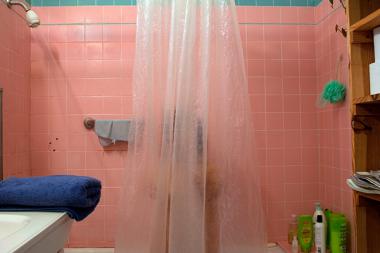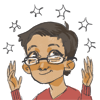Serendip is an independent site partnering with faculty at multiple colleges and universities around the world. Happy exploring!
You are here
Home » Web Paper or Special Event
By aquato
October 11, 2014 - 05:54
Right now, my cat is chasing a mouse around the room. Instinctually, I’d think that he was trying to take a chomp on the little guy, since that is a cat thing. However, at least three times now, my cat cornered the mouse, picked it up in his mouth, walked over to his little den, put the mouse down, and continued chasing. This leads me to believe that he isn’t hunting the mouse—on the contrary, he’s playing with it. Yet, I’m doubtful that the mouse sees this as the same fun, lighthearted pursuit as the Himalayan.
October 11, 2014 - 03:07
During childhood, many habits are formed in the process of child development. This beginning period of life is often referred to as the foundation for development. No matter if the child’s childhood was miserable or exceptional, it has a deep impact on the formation of the type of person the child will grow into be. Play is impossible to restrain from any child because play, in all of its entirely, is essential for every childhood. Play instructs kids to approach problems in hopes to resolve the issue. Play enlightens children to communicate. Play is a discipline that helps to prepare children for life, in an innocent manner. However, play is never free due to constraint of society.
October 11, 2014 - 01:36
Play Shouldn’t Be This Complicated
The Unknown began their last paper with “According to the Merriam Webster Dictionary play means, ‘to do activities for fun or enjoyment’ (Merriam Webster Dictionary 1). Though this definition sounds positive, I wonder, ‘Who's fun? Whose enjoyment?’” I think that this —what really is important about play—is a valid question to consider and it is a topic of constant debate in the many sources we’ve recently been reading.
October 11, 2014 - 00:36
By rokojo
October 10, 2014 - 23:56
My mom always said that there was a clear difference in the way my brother played and in the way my sister and I played. As girls, she said we always prefered playing with dolls and stuffed animals while my brother prefered robot and car figures. She also said the way we played with the same toys was different, my brother being rougher on his toys than we were. However, I do remember that my brother loved to play on barbie.com, something my sister and I teased him mercilessly for. There currently exists a large market for gendered toys, with very strong advertising enforcing the rules of who can play with what. Because of this, it’s possible to argue that our exposure to media and advertising shape these differences in how we play.
October 10, 2014 - 23:44
Decentralization and the Oceanhill Brownsville Crisis
In 1968 a series of three teacher strikes enacted by the United Federation of Teachers (UFT) occurred in opposition to the firing of ten Jewish school teachers by the newly predominantly black Oceanhill Brownsville, Brooklyn community school board. The community board was made possible by the policy of decentralization. Local school boards had been present in the school district of New York long before the Oceanhill Brownsville crisis, but the roles were advisory and only slightly administrative under the New York City board of education.
October 10, 2014 - 23:38
Humans are naturally social beings. It is important to remember that person to person interactions are essential to individuals’ development as functional members of society. It is because of the moments that are shared with others, while growing up especially, that people come to cognitively appreciate the role of others in their lives. When investigating how people gain the skills that allow them to relate, connect and evaluate others, the developmental stages of children are the most important. One of the most common and interactive activities taking up by children is play. This simple but important task is a building block for societal systems and understanding social norms.
October 10, 2014 - 16:46
Shower (2008)

White (2008)

October 10, 2014 - 16:23
Kathryn Ross
Identity Access and Innovation
Cohen
10 October 2014
Education of the Handicapped Act
October 10, 2014 - 15:45
Selena Martinez
Esem
Paper #6
October 10, 2014
Food as Play, Play as Food
Margerie’s short posting explaining that her playtime was eating, struck me as very unusual simply because it was not a method of play that I was familiar with. She wrote, “The only time that I could play is during the interval between after school and when my mom pick me up. There are so many delicious food near campus, so I usually used this time to satisfy my stomach. Eating is my way to relax.” By comparing this posting with the article “Ravens at Play”, I was able to recognize different dimensions of play on an independent and interdependent scale.









